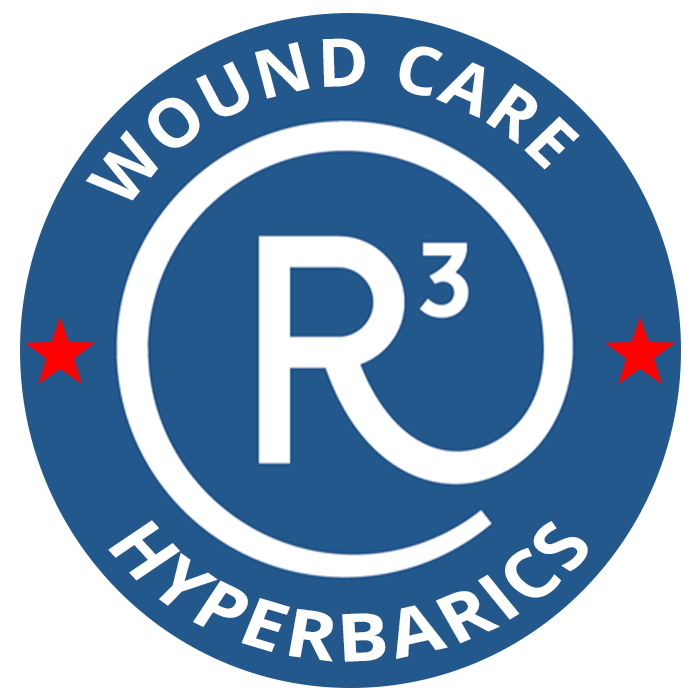If you are not exactly sure how hyperbaric chambers for wound healing works, here are some of the need-to-know details. First off, HBOT stands for Hyperbaric Oxygen Therapy, and it involves breathing pure oxygen in a pressurized chamber. Below we take a look at a few key areas of HBOT, including how many HBOT sessions you might need:
Why Would You Need HBOT Sessions?
Initially, HBOT was used to treat decompression sickness for scuba divers. However, it was soon discovered that there were many other benefits that come with HBOT therapy, including treating wounds that won’t heal due to diabetes, radiation injury, surgical wounds or traumatic injuries.
What Exactly Happens?
Inside the chamber, the air pressure is increased to three times higher than normal air pressure. This way, your lungs can collect more oxygen than they normally would be able to. At our clinics, HBOT treatment takes place in a clear reclining acrylic chamber where you can see your surroundings at all times.
Why is This Good?
Injured tissue needs more oxygen to survive. Since HBOT increases the amount of oxygen your blood can carry throughout your body, it then can help fight bacteria and stimulate the release of growth factors and stem cells – and these promote healing.
The Benefits of HBOT Sessions
Activating the body’s natural healing processes and reviving damaged tissue are the most significant benefits of HBOT sessions from wound healing specialists, such as R3 Wound Care and Hyperbarics. Here is a list of some other cellular benefits:
- More oxygen is released to the tissues
- The powerhouse of the cell (mitochondria) loses an electron, similar to anti-oxidation
- Preservation of mitochondrial integrity, avoiding damage
- Prevents the mitochondria from dying prematurely
- Reduces and or prevents inflammation in the cells and body
- The targeting of oxygen and pressure-sensitive genes improves mitochondrial function
What Can be Treated with HBOT?
Hyperbaric Oxygen Therapy alone can often effectively treat decompression sickness, arterial gas embolism, and severe carbon monoxide poisoning. For HBOT to help with other conditions, it will be used as part of a wide-ranging treatment plan and managed with other therapies and medication accordingly. Other conditions that can be treated with HBOT include:
- Soft tissue related issues and cell damage to soft tissue due to radiation treatment
- Infections such as bone or bone marrow and intracranial abscess
- Injuries resulting from trauma, from minor contusions to limb-threatening damage
- Wounds that are not healing correctly
- Severe anemia
- Compromised skin grafts and skin flaps
- Severe burns
- Hearing loss caused by a malfunction in a particular nerve in the brain
- Aid in the recovery after Mohs surgery, a procedure that removes skin cancer without any chemotherapy or radiation
How Many HBOT Sessions Do I Need?
A Hyperbaric Oxygen Therapy session at a wound care clinic typically takes just up to two hours. However, it can take a bit longer if patients have difficulty clearing their ears during the pressurization phase. To truly reap the benefits of HBOT, though, you’ll more than likely need more than one session.
Some conditions, such as carbon monoxide poisoning, might be treated in three visits. Others, such as non-healing wounds, may need 20 to 40 treatments. Most people see the best results after completing a treatment plan of one session a day, five days a week. At the least, we at R3 suggest those seeking effective HBOT should commit to three sessions per week.
It is essential to review each patient’s progress and adjust HBOT session frequency as needed. Just note, these are generalized timings and will need to be decided on by the wound healing specialists for each specific patient.
What to Expect at R3 Wound Care and Hyperbarics
The wound care specialists at the clinic work to assess each patient and then recommend the right treatment plan for them based on their condition. As a patient at R3 Wound Care & Hyperbarics, you’ll receive HBOT in a private setting with the latest hyperbaric medicine where you’ll be able to hear and speak to your treatment team, who will be monitoring you throughout the procedure.
The treatment is painless, although you may experience a sensation of pressure in your ears, very similar to the sensation you feel in an airplane while descending. During your treatment, you can sleep, watch TV, listen to music or relax.
Each of our eight Texas clinic locations located in the Dallas – Fort Worth, San Antonio and Houston areas, has state of the art equipment, skilled wound care specialists, and a comfortable atmosphere. At R3 Wound Care & Hyperbarics, our primary focus is wound care treatment, and we are independent of any hospital. You don’t even need a referral from a doctor to make an appointment or receive treatment.
References:
https://uihc.org/health-topics/frequently-asked-questions-about-hyperbaric-oxygen-therapy
https://elanaspantry.com/the-complete-guide-to-hyperbaric-oxygen-therapy/
https://www.mayoclinic.org/tests-procedures/hyperbaric-oxygen-therapy/about/pac-20394380
